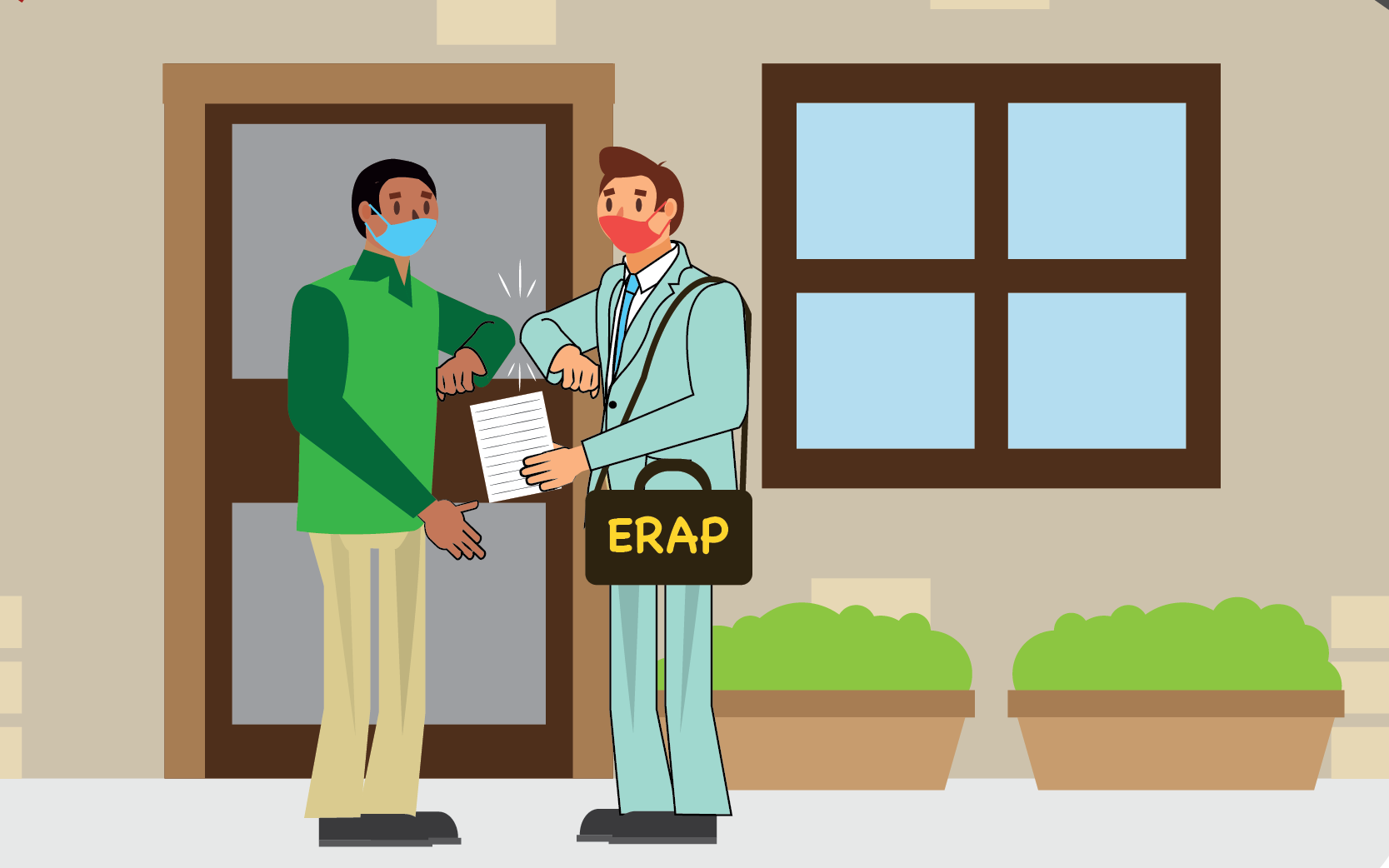Federal ERAP Aims to Keep More Renters in Their Homes
By Eric Weld, MassLandlords, Inc.
With the addition of ERAP, the Emergency Rental Assistance Program, a federal initiative announced on May 7, 2021, Massachusetts – and other states’ – residents who are struggling to pay rent due to the financial impact of the coronavirus pandemic now have another funding option.

ERAP, the Emergency Rental Assistance Program, was designed, with federal government funds, specifically to help renters affected by the COVID-19 economic slump to remain in their homes.
While coronavirus cases have declined significantly and the national economy shows strong signs of recovery, many renters in the state remain behind on rent and household bills, some owing well into five figures. In many cases, landlords have also fallen behind on mortgage, upkeep and utility bills, often as a result of losing rental income from distressed tenants.
This ERAP funding is part of the American Rescue Plan Act (ARPA), signed by President Joe Biden on March 11, 2021. The $1.9 trillion bill allocates $21.6 billion to all states for the specific purpose of creating ERAPs, and other housing assistance, to support renters and housing providers impacted by the pandemic. The ARPA builds on three previous Covid-related federal spending programs passed in 2020.
ERAP Funding by State
Massachusetts received $457 million as part of the program, to provide “broad rental and utility assistance through the end of 2021,” according to the Mass.gov ERAP FAQ. $20 million of that amount goes to Boston for housing assistance specific to the city and separate from ERAP.
According to U.S. Department of Treasury statistics, surrounding New England states received ERAP funding in rough proportion to their populations. Connecticut, with 3.5 million people, about half the population of Massachusetts, received nearly $236 million, while Rhode Island, Vermont and New Hampshire each received what appears to be a minimum funding threshold for small states of $200 million.
Applying for ERAP
Unlike Massachusetts programs, RAFT (Rental Assistance for Families in Transition) and ERMA (Emergency Rent and Mortgage Assistance), ERAP was set up specifically to help renters who are in danger of losing their housing because their income was affected by COVID-19. (RAFT and ERMA funding is not contingent on COVID-19 impact.).
ERAP applicants must be able to demonstrate that they are in danger of losing their housing due to COVID-19 impact.
Applications for ERAP are via a "Central App" administered by DHCD and routed to RAAs. Contact local RAAs (Regional Administering Agencies) with questions. RAAs can determine applicants’ eligibility among ERAP, RAFT and ERMA.
ERAP funding is only available for renters, to address rent and utilities arrears, and limited future rental payments. On June 4, 2021, ERAP was expanded to assist with up to 18 months of rent or utilities arrears or prospective rent. However, to qualify for ERAO funding, applicants must be at least one month in arrears. ERAP assistance may only be applied to costs accrued after March 13, 2020.
Landlords of any size may now apply directly for rental assistance on behalf of eligible renters who are having difficulty paying rent. Before doing so, work with your tenants to make sure they have not already applied for ERAP (duplicate applications for the same program could delay processing). Also, be sure to get a signed consent form from your tenants before applying for assistance on their behalf.
ERAP Is Not a RAFT Replacement
ERAP funding is not intended to replace RAFT or ERMA. Some applicants may be eligible for funding from more than one program, and households that have received RAFT and ERMA assistance are still eligible for ERAP, and vice versa. However, when applicants are eligible for more than one rental assistance program, ERAP will be prioritized over RAFT and ERMA while federal funding is available.
Alternatively, applicants who don’t qualify for or have been turned down by ERAP may qualify for a different assistance program, such as RAFT. For example, if your tenant was turned down by ERAP because they cannot prove Covid-related impact on their income, they might qualify for RAFT, which does not have that requirement.
ERAP is an ad hoc rental assistance program created with federal government funding. When that funding is exhausted, the program will end, while RAFT and ERMA remain in place for ongoing rental assistance in the state.
How Is ERAP Different From RAFT and ERMA?
ERAP is distinct from RAFT and ERMA in a few important ways.
In order to qualify for ERAP funding, renters must provide a written statement detailing COVID-19 impacts on their income, such as unemployment, decreased wages and/or increased expenses.
ERAP also provides a higher benefit, with no cap on the dollar amount (in contrast to RAFT's $7,000 limit). Funding may be used for up to 18 months of rental arrears and utilities arrears up to $1,500. This funding may only be used for arrears accrued after March 13, 2020, and qualified applicants must be currently in arrears for at least one month.
ERAP also allows a higher income for eligibility. Renters who earn up to 80% of Area Median Income (AMI) may qualify for ERAP funding, as opposed to RAFT’s limit of 50% AMI for eligibility. Applicants should remember to use their most current income, as it has been impacted by COVID-19.
Spend It or Lose It
Like funds allocated to Massachusetts in the Consolidated Appropriations Act of 2021 (CAA 2021), ERAP funds come with a “use it or lose it” caveat. “After September 2021, the U.S. Treasury may reallocate unobligated funds to grantees that have obligated at least 65% of their funding,” according to the mass.gov FAQ.
All ERAP funds are required to be committed by September 2022.
ERAP Conclusion
State programs such as RAFT and ERMA are permanent programs that have been in place before and during the pandemic to help renters remain in their homes. But given the magnitude of the financial crisis, existing programs have not been enough.
According to MassLandlords’ monthly state eviction analyses, there are still between 200 and 400 evictions per month being filed in court divisions across the state. Eviction filings have come down since a spike following the expiration of the federal eviction moratorium in October. But thousands of Massachusetts renters are still at risk of losing their housing.
ERAP is intended as temporary assistance to keep as many renters in their homes as possible as the economy continues to recover.




